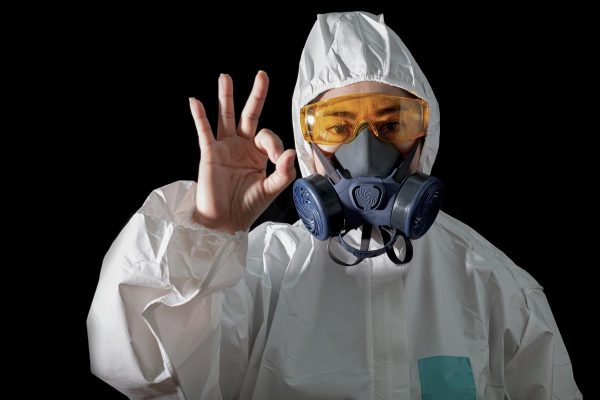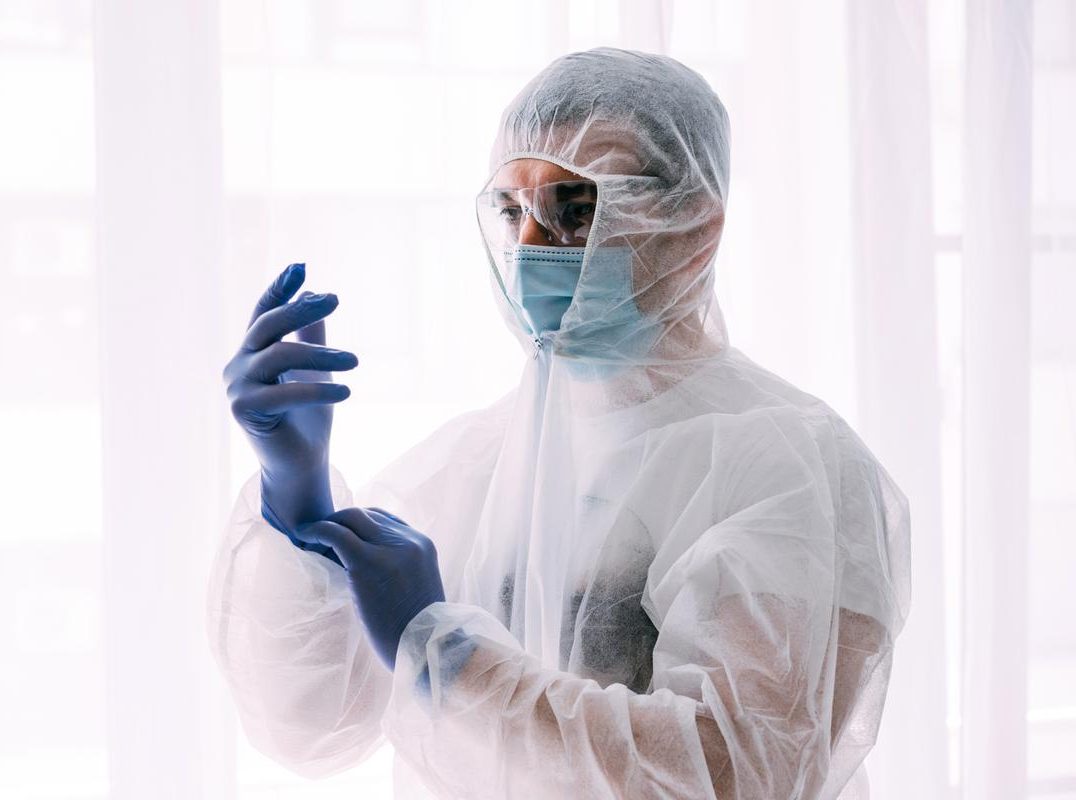Introduction
Personal Protective Equipment plays a crucial role in protecting healthcare workers from workplace hazards, including bacteria, viruses, chemicals, and other harmful agents. However, if PPE is chosen incorrectly or does not meet quality standards, it can increase health risks rather than provide protection. This article will analyze five serious risks of choosing the wrong PPE in the healthcare industry and offer solutions to help healthcare workers protect themselves effectively.
Additionally, understanding proper Personal Protective Equipment selection can significantly reduce long-term health issues and enhance workplace safety. Healthcare workers must be well-informed about the risks associated with improper PPE to avoid unnecessary exposure to hazards.

5 Health Risks of Choosing the Wrong PPE
Direct Exposure to Pathogens
In healthcare environments, workers frequently come into contact with patients suffering from infectious diseases. If Personal Protective Equipment is not selected correctly or does not meet quality standards, workers may become infected with viruses, bacteria, or other biological hazards through respiration, skin contact, or bodily fluids.
Consequences:
- Increased risk of contracting infectious diseases such as COVID-19, flu, tuberculosis, hepatitis B, and C.
- Long-term health impacts and severe complications.
- Higher risk of cross-infection between healthcare workers and patients.
- Increased absenteeism among healthcare staff due to illness, affecting hospital operations.
Solutions:
- Use N95 masks or PPE with high bacterial filtration efficiency.
- Equip protective goggles, medical gowns, and certified gloves.
- Follow proper donning and doffing procedures to prevent cross-contamination.
- Ensure regular PPE training for healthcare workers to enhance safety protocols.
Skin Allergic Reactions
Some healthcare workers may be allergic to Personal Protective Equipment materials such as latex rubber, synthetic fabrics, or chemicals found in gloves and masks. This can cause skin irritation, rashes, itching, and contact dermatitis.
Consequences:
- Allergic dermatitis, dry skin, redness, and sores if exposed for long periods.
- Increased risk of infection due to damaged skin.
- Reduced work efficiency due to discomfort.
- Risk of severe allergic reactions (anaphylaxis) in extreme cases.
Solutions:
- Choose nitrile or vinyl gloves instead of latex to avoid allergies.
- Use skin-protecting creams and wash hands properly.
- Check PPE components before use to prevent irritation.
- Encourage healthcare facilities to provide hypoallergenic PPE options.
Restricted Airflow, Respiratory Issues
Using ill-fitting or overly tight Personal Protective Equipment can cause suffocation, breathing difficulties, and discomfort, especially when working for extended periods. This affects respiratory health and reduces work performance.
Consequences:
- Fatigue, dizziness due to lack of oxygen.
- Increased risk of fainting when working in confined environments.
- Reduced work efficiency and concentration levels.
- Higher stress levels, leading to decreased job satisfaction.
Solutions:
- Choose certified masks with necessary ventilation features.
- Ensure PPE is adjustable for a proper fit.
- Take regular breaks to avoid prolonged exposure in restricted environments.
- Conduct fit-testing to ensure proper seal and comfort for extended use.
Increased Risk of Injury Due to Improper PPE
Ill-fitting or low-quality Personal Protective Equipment can hinder movement or manual operations, increasing the risk of accidents and injuries.
Consequences:
- Higher risk of slips and falls due to ill-fitting safety shoes.
- Impaired vision when protective goggles are foggy or too tight.
- Difficulty handling tasks when gloves are too tight, too loose, or prone to tearing.
- Reduced agility and responsiveness in emergency situations.
Solutions:
- Select PPE in the correct size for each individual.
- Use anti-fog protective goggles to ensure clear vision.
- Inspect PPE before use to ensure safety and durability.
- Provide PPE training on proper fitting and handling techniques.
Reduced Protection Due to Counterfeit or Low-Quality Personal Protective Equipment
Currently, the market is flooded with counterfeit or substandard Personal Protective Equipment, which reduces the protective capabilities of these essential tools. Healthcare workers may be deceived by such products if they fail to check their origins carefully.
Consequences:
- Fake PPE lacks the bacterial and viral filtration capacity of genuine products.
- Gloves tear easily, and medical gowns may not be liquid-resistant.
- False sense of security, leading workers to become more careless.
- Increased legal risks for healthcare institutions using substandard equipment.
Solutions:
- Purchase PPE from reputable suppliers with certified quality standards.
- Check labels, batch numbers, and product origins before use.
- Strengthen training for healthcare workers on how to identify counterfeit PPE.
- Conduct random quality checks to ensure compliance with safety regulations.
Learn more: How to Identify Certified PPE
Conclusion
Choosing the right Personal Protective Equipment is crucial to ensuring the health and safety of healthcare workers. PPE must not only meet quality standards but also fit properly to ensure maximum comfort and efficiency. By understanding the risks associated with improper PPE use, we can proactively mitigate hazards and create a safer working environment.
Furthermore, healthcare institutions must prioritize high-quality Personal Protective Equipment procurement and ensure that employees receive ongoing training to maximize protection. Continuous evaluation and improvement of PPE standards can help reduce workplace risks and improve overall healthcare efficiency.
Always thoroughly inspect Personal Protective Equipment before use, select products from reputable suppliers, and follow correct PPE usage procedures to protect yourself and your patients in the best possible way!
Where to Buy Certified PPE?
At TM&DV 8688 Co., Ltd, we understand that healthcare professionals deserve the highest level of protection. Our company is dedicated to providing top-quality, certified PPE that meets international safety standards to ensure maximum durability, comfort, and protection.
Wide range of Personal Protective Equipment products: surgical gown, boot, apron, coveralls, safety vest, and more. Guaranteed safety & certification: All our products comply with strict industry regulations to safeguard your health. Trusted by healthcare professionals: We have served hospitals, clinics, and healthcare providers with premium PPE solutions. Fast & reliable delivery: We ensure timely delivery, so you never run out of essential protective gear. Competitive pricing & bulk order discounts: Get the best deals without compromising on quality.
👉 Contact us now: 8688 Company Website for more details!
📞 Hotline: (+84) 941098688
📍 Address: No. 68 Hoang Hiep str, Hoa Xuan ward, Cam Le district, Da Nang city, Vietnam
By choosing certified Personal Protective Equipment, you safeguard your health, improve workplace safety, and ensure the highest level of protection for both healthcare workers and patients.

